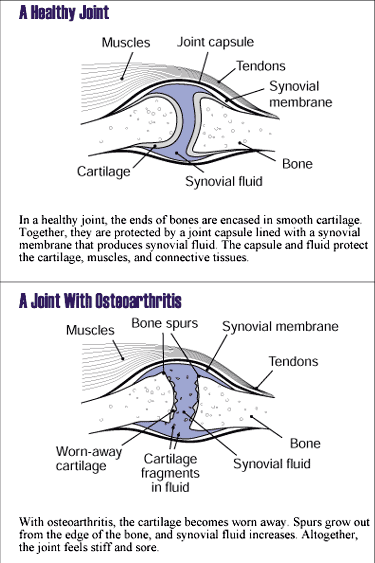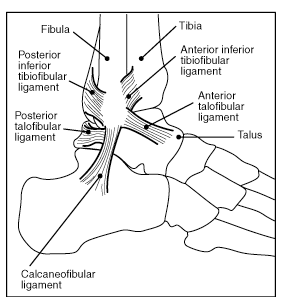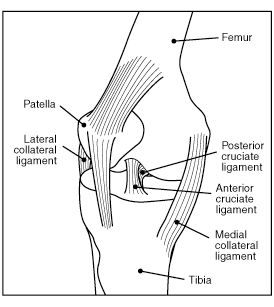Can I obtain VA disability benefits for arthritis or joint damage?
Yes, VA disability benefits for your arthritis or joint damage may be available.
You will need to prove that (a) you were in the military, (b) your arthritis or joint damage originated or was aggravated while you were on active duty, (c) you were continuously treated for your arthritis or joint damage since leaving the service (unless you are filing your disability claim within one year of leaving the service or your condition has been chronic), and (d) you are currently disabled by your arthritis or joint damage.
Joint pain and loss of joint mobility may be caused by a number of disorders including:
Osteoarthritis
Osteomyelitis
Traumatic damage to joints
Osteoarthritis
In all joints, osteoarthritis is the most common arthritis.
Osteoarthritis is also known as hypertrophic arthritis or degenerative arthritis. Osteoarthritis is not a systemic disease. It doesn’t affect the entire body; its effects are confined to the involved joints. Osteoarthritis is slowly progressive and starts with damage to the cartilage on opposing ends of bone inside the joint space. Any joint in the body can be involved. Heavy impact activity on joints predisposes them to the development of osteoarthritis. Osteoarthritis is also associated with advancing age. Trauma to a joint, such as a fracture into a joint space, is frequently followed by development of osteoarthritis.
As joint cartilage begins to soften and thin, unusual stresses are also put on the underlying joint bone. The body responds to cartilage and bone damage by trying to grow new bone. This process can lead to osteophytes (spurs) around joints or in the spine, as well as narrowing of whatever joint space is involved.
Generally, claimants with osteoarthritis applying for disability benefits allege some degree of limiting symptoms like pain and stiffness. Individual symptoms and functional levels vary greatly, and disability determination should not be based on any one finding, such as X-ray evidence, alone. However, objective abnormalities like deformity, restriction in joint motion, and joint narrowing on X-ray play an important role in convincing the rating board that your report of your symptoms is credible.

Figure 1: Osteoarthritis joint abnormalities.
Osteomyelitis
Osteomyelitis most often occurs as a result of trauma producing open wounds that allow bacteria into the body, surgical procedures, or bacteria circulating in the bloodstream—a condition known as bacteremia. Osteomyelitis of joints can affect their function by means of bone destruction and joint deformity.
In weight-bearing bones, fractures through the area of infection can occur during the stage of acute infection, or later due to brittle bone. The orthopedic surgical management of osteomyelitis can be complex. Surgery may be needed to remove infected bone. In rare cases, amputation (such as of a toe) may be necessary.
With modern antibiotics, acute osteomyelitis can be treated more effectively, so that chronic osteomyelitis is not as common as it was in the past. When chronic osteomyelitis does occur, it can present a difficult problem because the chronically infected bone may die and that restricts delivery of antibiotics through the bloodstream. Also, secondary infection may occur in tissues near the bone that involves different organisms than those that infect the bone itself.
An area of infected bone is called a sequestrum. In the treatment of chronic osteomyelitis, surgery to remove the sequestrum along with infected soft tissues near the infection is a common requirement. Infected soft tissue removal may require reconstruction of soft tissues, such as muscle and skin grafts.
The hole in the bone left by removal of the sequestrum may be packed with antibiotic beads. Antibiotic bead implantation may be temporary (10 days) to permanent, depending on the judgment of the surgeon. Whatever surgical antibiotic treatment is given, the patient will require prolonged systemic antibiotic therapy lasting well through surgical recovery, in order to prevent recurrent infection.
Infected bone fractures can be particularly difficult to heal. Such a situation might arise from an open wound and fractures occurring during an automobile accident or other trauma.
Traumatic damage to joints
Fractures into joint spaces have a high potential for producing post-traumatic arthritis and, perhaps, deformity. The more fragmented the joint-space bones, the more difficult it will be to return the joint to normal functional status.
Additionally, ligaments that hold a joint in proper position can be partially or completely torn. Torn ligaments can destabilize a joint. For example, important ligaments stabilizing the knee joint are the anterior and posterior cruciate ligaments. Some claimants have unstable joints resulting from damage to these structures.

Figure 2: Ankle ligaments.

Figure 3: Knee ligaments.





